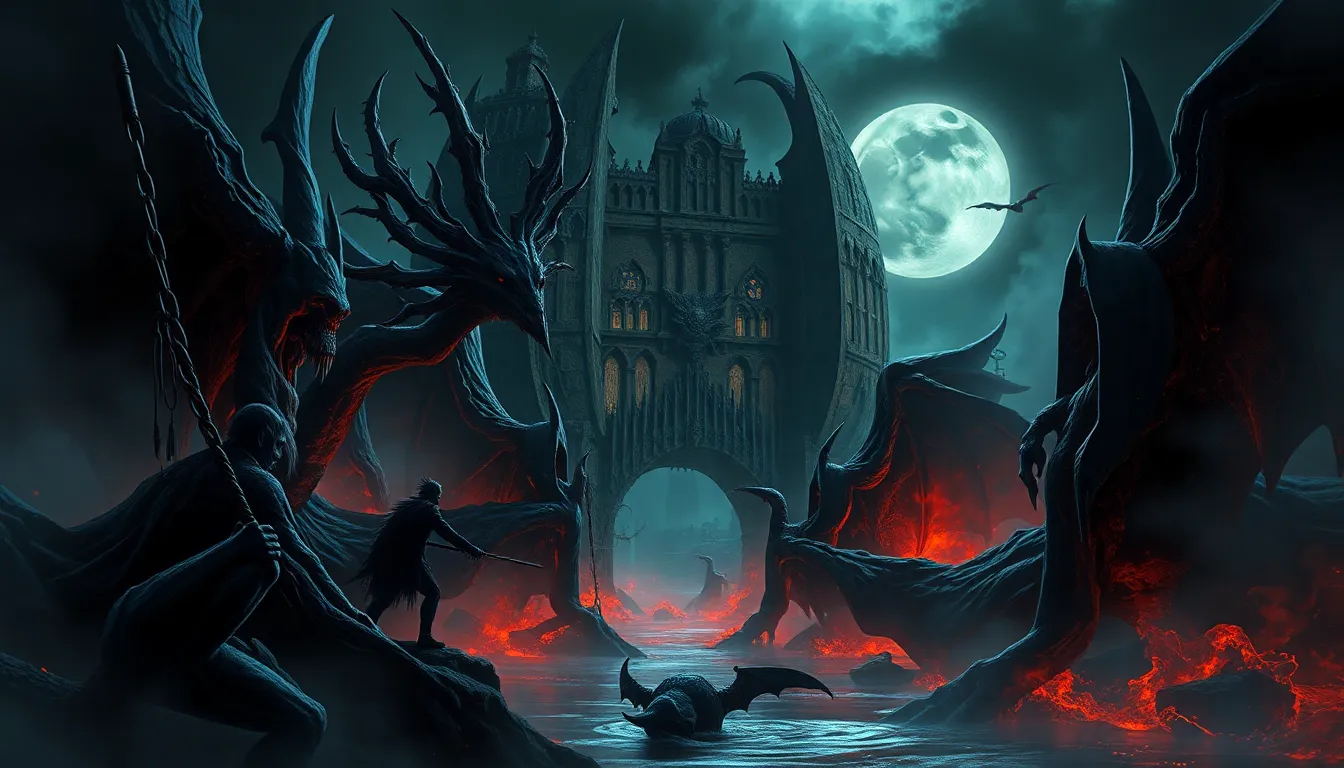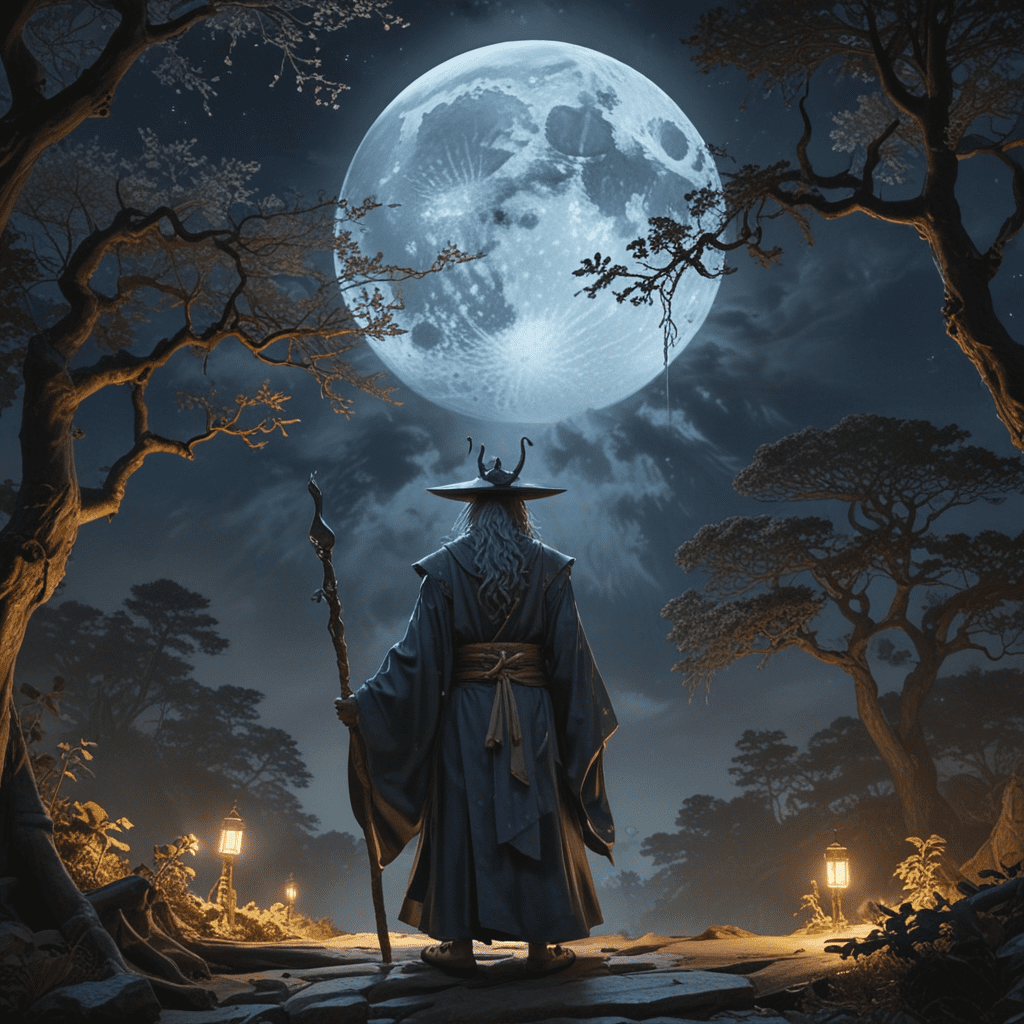Tales from the Underworld: Legends of the Damned
I. Introduction
The concept of the Underworld has captivated human imagination across various cultures throughout history. Often viewed as a realm of the dead, the Underworld serves as a backdrop for tales of the damned—those souls condemned for their misdeeds in life. This article explores the rich tapestry of legends and stories from different traditions, illustrating how the Underworld has been interpreted across cultures and times.
II. The Underworld in Mythology
Mythologies around the world present unique perspectives on the Underworld, often reflecting societal values and beliefs about life, death, and morality.
A. Greek Mythology: Hades and the River Styx
In Greek mythology, the Underworld is ruled by Hades, where souls of the deceased dwell. The River Styx serves as a boundary between the living and the dead, and Charon, the ferryman, transports souls across it. The Greeks believed that proper burial rites were essential to ensure safe passage to the afterlife, and those who could not pay Charon were left to wander the shores of the Styx eternally.
B. Roman Beliefs: Dis Pater and the Afterlife
The Romans adopted many Greek concepts but had their own interpretations. Dis Pater, the god of the Underworld, presided over the realm of the dead, which was often seen as a dreary place devoid of joy. Romans believed in the importance of honoring the dead through rituals, and they viewed the afterlife as a continuation of life, albeit in a different form.
C. Norse Cosmology: Hel and the Hall of the Slain
In Norse mythology, Hel is the realm of the dead, ruled by the goddess Hel. Unlike the fiery pits of other traditions, Hel is depicted as a cold and shadowy place. Warriors who died in battle were taken to Valhalla, a hall for the slain, where they would prepare for Ragnarok. This duality in Norse beliefs highlights different paths souls could take after death.
III. Folklore and Urban Legends of the Damned
Folklore provides rich narratives about the damned, blending cultural beliefs with cautionary tales that often carry moral lessons.
A. The Wailing Woman: La Llorona in Latin American Culture
La Llorona, or the Wailing Woman, is a sorrowful spirit who mourns her lost children. Her legend warns of the dangers of neglect and the consequences of one’s actions, as she roams riversides, crying for her children and scaring those who hear her wails.
B. The Legend of the Headless Horseman in American Folklore
The Headless Horseman, famously featured in Washington Irving’s “The Legend of Sleepy Hollow,” represents the restless spirits of the damned. The tale serves as a cautionary narrative about unresolved issues and the consequences of fear and superstition.
C. The Black Shuck: A Ghostly Hound of East Anglia
The Black Shuck is a spectral hound said to roam the countryside of East Anglia. Associated with death, sightings of this ghostly creature are often considered omens, warning inhabitants of impending doom or tragedy.
IV. Literary Depictions of the Damned
Literature has long explored themes of the damned, presenting complex characters and moral dilemmas in the context of the Underworld.
A. Dante’s “Inferno” and the Structure of Hell
Dante Alighieri’s “Inferno” offers a detailed portrayal of Hell, divided into nine circles, each representing different sins and their corresponding punishments. This allegorical work not only reflects medieval beliefs about sin and morality but also serves as a critique of contemporary society.
B. Milton’s “Paradise Lost” and the Fall from Grace
John Milton’s “Paradise Lost” explores the themes of free will, temptation, and the consequences of disobedience. Through the character of Satan, Milton delves into the nature of rebellion and the tragic fall from grace, illustrating the complexities of the damned.
C. Modern Interpretations in Horror Literature
Contemporary horror literature often revisits themes of the damned, exploring psychological horror and moral ambiguity. Authors like Stephen King and Clive Barker incorporate elements of the Underworld, challenging readers to confront their fears and the consequences of human actions.
V. The Role of Sin and Morality in Underworld Tales
Underworld tales frequently serve as moral lessons, reflecting the values and beliefs of the societies from which they originate.
A. The Seven Deadly Sins and Their Representations
- Pride: Often depicted as the root of all sins, leading to one’s downfall.
- Greed: Represented by figures who hoard wealth, facing eternal punishment.
- Lust: Characters driven by desire often suffer tragic fates.
- Envy: The destructive nature of envy leads to chaos and revenge.
- Gluttony: Excess often results in self-destruction.
- Wrath: Anger and vengeance lead to cycles of violence.
- Sloth: Inaction and indifference result in missed opportunities and regrets.
B. Moral Lessons Derived from Tales of the Damned
Each story of the damned carries a moral lesson, often warning against particular vices or behaviors. These tales encourage reflection on personal conduct and its repercussions in life and beyond.
C. The Concept of Redemption and Forgiveness
Many traditions highlight the possibility of redemption. Characters who seek forgiveness or make amends often find a way to escape their damned fate, illustrating the importance of compassion and second chances.
VI. The Damned in Religion
Religious beliefs provide varied perspectives on the nature of the damned, often influencing cultural narratives and moral teachings.
A. Christian Views: Hell, Purgatory, and Salvation
In Christianity, Hell is often seen as a place of eternal punishment for the damned, while Purgatory serves as a transitional state for souls seeking purification. Salvation through faith and good deeds offers hope for redemption.
B. Hindu Beliefs: Naraka and Karma
In Hinduism, Naraka is a temporary realm of punishment where souls experience the consequences of their actions based on Karma. After serving their time, souls can be reborn, emphasizing the cyclical nature of life and death.
C. Ancient Egyptian Practices: The Weighing of the Heart
The Ancient Egyptians believed in a judgment process involving the weighing of the heart against the feather of Ma’at, the goddess of truth. A balanced scale indicated a worthy soul, while a heavy heart led to eternal damnation.
VII. Contemporary Adaptations of Underworld Legends
Modern media has adapted Underworld legends into various forms, reflecting evolving cultural interpretations.
A. Film and Television: From Horror Movies to Fantasy Epics
Films such as “The Seventh Seal” and “What Dreams May Come” explore themes of the afterlife, while horror movies like “Hellraiser” delve into the concept of the damned.
B. Video Games: Exploring the Underworld in Interactive Media
Video games like “Dante’s Inferno” and “God of War” allow players to engage with Underworld narratives, offering immersive experiences that challenge their moral choices.
C. Graphic Novels and Comic Books: Visual Storytelling of the Damned
Graphic novels like “Sandman” by Neil Gaiman explore the Underworld and its inhabitants, blending mythology and modern storytelling to create rich narratives about life, death, and the damned.
VIII. Cultural Variations in Underworld Narratives
Different cultures interpret the Underworld through unique lenses, reflecting their values and beliefs.
A. African Mythology: The Land of the Dead
African myths often present varied views on the afterlife, with some cultures believing in ancestral spirits who guide the living, while others depict a more ominous realm.
B. Indigenous Perspectives: The Spirit World
Indigenous cultures often view the afterlife as a continuation of existence in the Spirit World, where ancestors interact with the living, emphasizing a connection between realms.</




